26th August, 2025
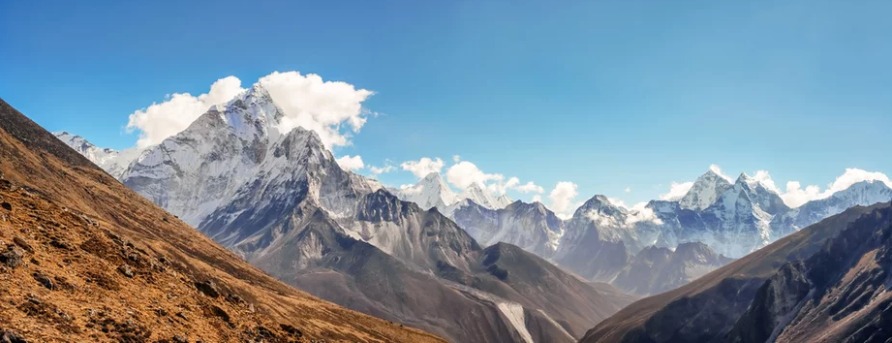
May 28, 2024
Lobuche Peak Climbing In January
- Winter Climbing on Lobuche Peak: January Challenges
- January Weather Conditions on Lobuche Peak
- Climbing Lobuche Peak in Winter: Pros and Cons
- Ice Climbing Techniques for January Ascents
- Avalanche Risk Assessment in January
- Winter Gear and Equipment Checklist for Lobuche Peak
- Permit Requirements and Regulations for January Climbs
- Hiring a Guide or Joining a Guided Expedition in January
- Physical Conditioning for Winter High-Altitude Climbing
- Crevasse Rescue Techniques in Deep Snow Conditions
- Winter Camping on Lobuche Peak: Tips and Strategies
- Staying Warm and Dry in Extreme Cold Conditions
- Dealing with Frostbite and Hypothermia on the Mountain
- Emergency Response Planning for Winter Climbing Accidents
- Communication Strategies in Remote Winter Environments
- Packing Essentials for Winter Climbing on Lobuche Peak
- Winter Navigation Techniques: GPS, Maps, and Compass Use
- Environmental Impact of Winter Climbing on Lobuche Peak Ecosystems
- Conclusion: Tips for a Successful Lobuche Peak Climb in January
- Lobuche Peak Climbing Packages
Climbing Lobuche Peak in January offers mountaineers a thrilling adventure amidst the serene winter landscape of the Everest region in Nepal. Standing at 6,119 meters (20,075 feet), Lobuche Peak is renowned for its challenging ascent and stunning panoramic views of Everest, Lhotse, and Nuptse.
January marks the peak of winter in the Himalayas, characterized by cold temperatures and stable weather conditions. Days are typically clear and sunny, ideal for climbing, although temperatures can drop significantly, especially at higher altitudes. Climbers must prepare for sub-zero temperatures, ensuring they have adequate cold-weather gear such as down jackets, insulated pants, and mountaineering boots with crampons for traction on icy slopes.
The journey to Lobuche Peak begins with a scenic flight from Kathmandu to Lukla, followed by a trek through the picturesque Sherpa villages of Namche Bazaar, Tengboche, and Dingboche. Accommodation options along the trail range from cozy tea houses to comfortable lodges, providing essential amenities amidst the tranquil mountain environment.
Climbing Lobuche Peak in January presents challenges including navigating icy and snow-covered terrain, crossing crevasses, and acclimatizing to high altitudes. Physical fitness and mental resilience are crucial for overcoming these challenges and ensuring a safe ascent. Experienced guides and support staff assist with route planning, safety measures, and emergency response, enhancing climbers' confidence and safety during the expedition.
Summiting Lobuche Peak rewards climbers with breathtaking views from the summit, offering a unique perspective of the world's highest peaks enveloped in winter's pristine beauty. Cultural interactions with Sherpa communities provide insights into local traditions and warm hospitality, enriching the climbing experience amidst the Himalayan wilderness.
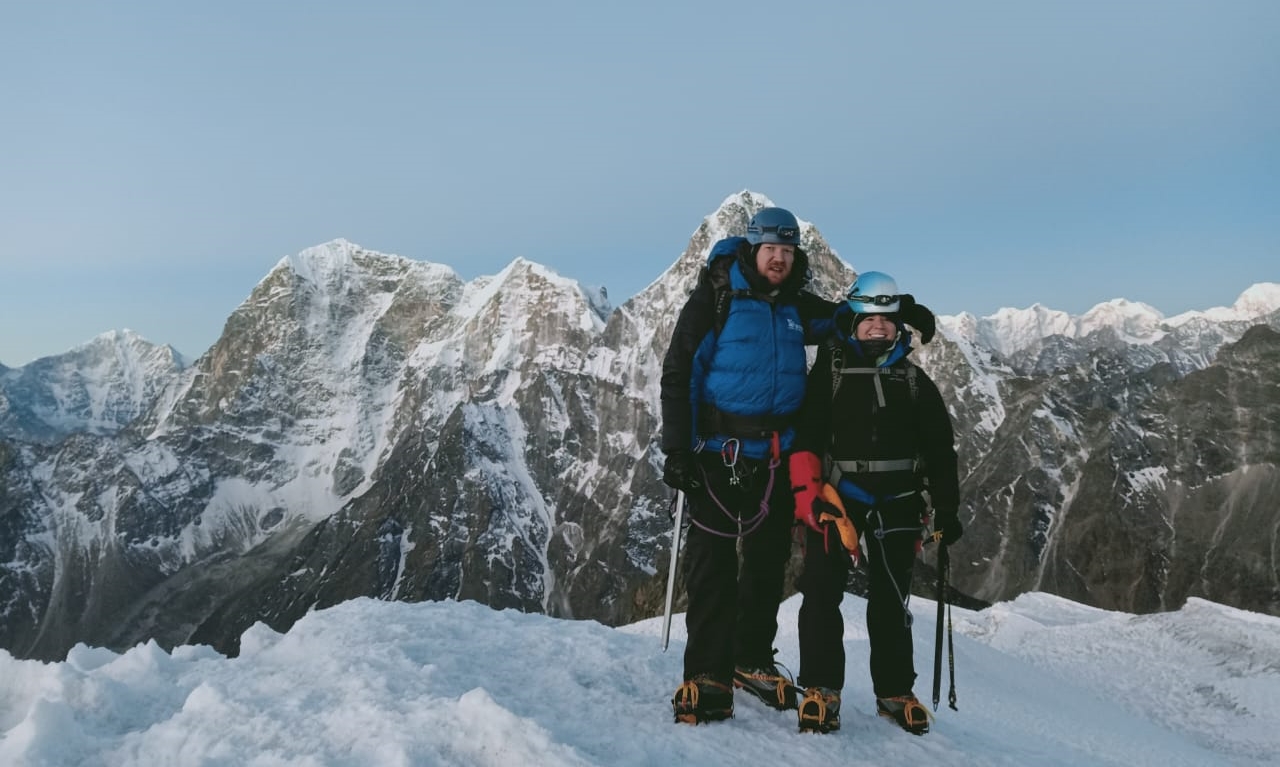
LOBUCHE PEAK CLIMBING
Lobuche East (6,119m/20,075ft), set in Nepal's stunning Khumbu on the Nepalese side of Everest.The best time to go trekking in Nepal is in Autumn (September-November) and in...
Climbing Lobuche Peak in January combines the thrill of adventure with the tranquility of Nepal's winter landscapes. Despite the cold and challenging conditions, January offers quieter trails and excellent climbing conditions, making it an ideal time for adventurous mountaineers seeking a unique winter climbing experience in the Everest region. Whether driven by the desire for personal achievement or the love of mountain exploration, Lobuche Peak in January promises an unforgettable journey filled with challenges, rewards, and the majestic beauty of the Himalayas.
Winter Climbing on Lobuche Peak: January Challenges
Winter climbing on Lobuche Peak in January presents mountaineers with formidable challenges due to the extreme cold and unpredictable weather conditions in the Everest region. The ascent to Lobuche Peak at 6,119 meters (20,075 feet) requires navigating through deep snow, icy slopes, and crevassed glaciers. Days are shorter, and temperatures can plummet well below freezing, requiring climbers to endure harsh conditions while maintaining physical endurance and mental resilience.
Challenges include frostbite risk due to prolonged exposure, heightened avalanche hazards after snowfall, and reduced visibility during snowstorms. Acclimatization becomes more critical as altitude-related illnesses pose increased risks in winter's cold and dry air. Careful planning, adherence to safety protocols, and flexible itinerary adjustments are essential for managing risks and ensuring a safe and successful climb on Lobuche Peak in January.
January Weather Conditions on Lobuche Peak
January weather conditions on Lobuche Peak are characterized by cold temperatures, clear skies, and occasional snowfall in the Everest region. Daytime temperatures at lower elevations range from -10°C to -5°C (14°F to 23°F), while temperatures at higher altitudes, including Lobuche Base Camp and High Camp, can drop below -20°C (-4°F) or lower. Clear skies provide excellent visibility for climbing, although weather patterns can change rapidly with the potential for snowstorms and high winds.
Climbers should be prepared for variable weather conditions by packing adequate cold-weather gear, including insulated jackets, waterproof gloves, and thermal base layers. Monitoring weather forecasts from reliable sources and acclimatization stops help climbers plan ascent and descent routes to optimize safety and comfort. January's cold and stable weather conditions offer quieter trails and pristine mountain views, making it a popular but challenging time for winter climbing on Lobuche Peak.

LOBUCHE PEAK SUMMIT RETURN BY HELICOPTER
A real climbing adventure that will leave you stunned at the beauty of the Himalayan Mountains. The Lobuche Peak Climbing expedition in the spectacular Khumbu region of Nepal has been ranked by Lonely...
Climbing Lobuche Peak in Winter: Pros and Cons
Climbing Lobuche Peak in winter offers unique advantages and challenges that appeal to experienced mountaineers seeking adventure in Nepal's Himalayas. Pros include quieter trails and fewer climbers, allowing for a more intimate and serene mountain experience. The stable weather conditions in January typically provide clear skies and excellent visibility, enhancing panoramic views of Everest, Lhotse, and Nuptse from the summit.
However, winter climbing on Lobuche Peak presents significant challenges, including extreme cold, icy terrain, and increased risk of avalanches after snowfall. Days are shorter, requiring efficient time management and early starts for summit attempts. Limited lodge availability along the trekking route may necessitate camping, adding logistical challenges to the expedition.
Climbers must be physically fit and mentally prepared for the demands of winter climbing, including proper acclimatization to high altitudes and proficiency in cold-weather survival skills. Experienced guides and support staff provide invaluable expertise, enhancing safety and navigation in challenging winter conditions on Lobuche Peak.
Ice Climbing Techniques for January Ascents
Ice climbing techniques are essential skills for ascending Lobuche Peak in January, where icy and snow-covered terrain requires precise footwork and secure anchoring. Crampons, fitted to mountaineering boots, feature metal spikes that provide traction on steep slopes and icy surfaces. Front-pointing techniques allow climbers to ascend and descend safely, maintaining balance and stability with each step.
Ice axes serve multiple purposes, including self-arrest in case of slips or falls and creating secure anchor points for rope teams during glacier crossings. Techniques such as the French technique and German technique vary in grip and leverage, allowing climbers to adapt to different snow and ice conditions encountered on Lobuche Peak.
Mastery of ice climbing techniques enhances climbers' confidence and efficiency in navigating technical terrain and ensures safe progression throughout the winter climb. Regular practice and familiarization with equipment, including ropes, harnesses, and ice screws, prepare climbers for the challenges of ascending Lobuche Peak's icy slopes and crevassed glaciers in January.

LOBUCHE PEAK EXPEDITION 14 DAYS
The Lobuche Peak Expedition is a 14-day trekking adventure that takes you to the heart of the Khumbu region in Nepal. It is a popular trekking peak in the Himalayas, with stunning views of the surroun...
Avalanche Risk Assessment in January
Avalanche risk assessment is a critical aspect of winter climbing on Lobuche Peak in January, where snowfall and changing weather conditions increase the likelihood of avalanches. Factors contributing to avalanche risk include steep terrain, recent snow accumulation, wind loading, and temperature fluctuations. Climbers assess slope angles and terrain features for signs of instability, such as recent avalanches, cracking or collapsing snow layers, and visible wind patterns.
Monitoring weather forecasts and snowpack stability through snow pits and stability tests inform decision-making on route selection and timing for safe ascent and descent. Implementing mitigation strategies, such as traveling early in the day to avoid solar heating, maintaining safe distances between team members, and carrying avalanche rescue equipment, enhances safety in avalanche-prone areas of Lobuche Peak during January.
Climbers should prioritize avalanche awareness and preparedness to minimize risks and ensure a successful and safe winter climbing experience in the Himalayas.
Winter Gear and Equipment Checklist for Lobuche Peak
Preparing for a winter ascent of Lobuche Peak in January requires a comprehensive gear and equipment checklist to ensure safety and comfort in extreme Himalayan conditions. Essential clothing includes moisture-wicking base layers, insulating mid-layers, and waterproof outer shells to manage temperature and moisture. Insulated gloves, a balaclava or neck gaiter, and thermal socks paired with mountaineering boots equipped with crampons protect against frostbite and maintain warmth.
Technical gear includes a four-season expedition tent with snow skirts, a sleeping bag rated for sub-zero temperatures, and an insulated sleeping pad for insulation and comfort during cold nights. Portable stoves for melting snow and cooking hot meals, along with high-energy snacks, provide essential nutrition and hydration. Navigation tools such as GPS devices, detailed maps, and a compass ensure accurate route finding in snow-covered terrain.
Safety equipment includes a comprehensive first aid kit, avalanche transceiver, probe, and shovel for avalanche rescue preparedness. Personal gear like headlamps with spare batteries, sunglasses with UV protection, and sunscreen protect against high-altitude sun exposure. Packing lightweight and durable equipment ensures climbers are well-prepared for the challenges of winter climbing on Lobuche Peak.
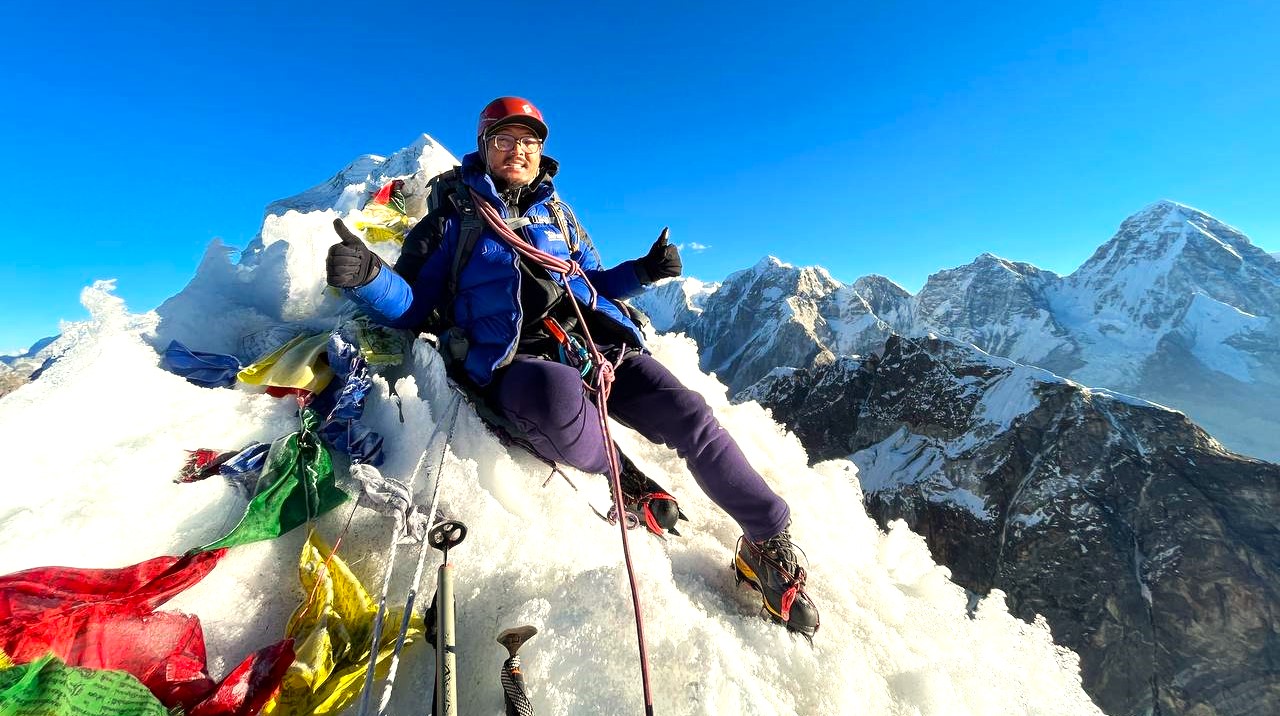
LOBUCHE PEAK EXPEDITION 15 DAYS
Lobuche Peak Expedition is a thrilling adventure that takes you to the heart of the Khumbu region in Nepal. The peak stands at an altitude of 6,119 meters and offers stunning views of the surrounding...
Permit Requirements and Regulations for January Climbs
Obtaining permits for January climbs on Lobuche Peak involves complying with Nepal's mountaineering regulations and environmental conservation policies. Climbers must obtain a climbing permit from the Nepal Mountaineering Association (NMA) or the Ministry of Tourism, Culture, and Civil Aviation (MoTCCA), depending on the peak's classification and location. Permits specify climbing dates, route details, and required fees, contributing to responsible tourism management and support for local communities.
Environmental regulations aim to minimize impact on fragile Himalayan ecosystems, including waste management practices and adherence to Leave No Trace principles. Climbers should carry out all non-biodegradable waste and adhere to designated climbing routes to preserve natural habitats and cultural heritage sites. Conservation efforts are crucial for maintaining the pristine beauty and biodiversity of the Everest region, ensuring future generations can enjoy the Himalayan wilderness.
Hiring a Guide or Joining a Guided Expedition in January
Hiring a qualified guide or joining a guided expedition in January enhances safety and enhances the overall climbing experience on Lobuche Peak. Professional guides possess extensive knowledge of local terrain, weather patterns, and emergency procedures, providing valuable support and guidance throughout the climb. Guides facilitate acclimatization stops, route planning, and navigation through challenging terrain, optimizing climbers' chances for a successful summit bid.
Guided expeditions offer logistical support, including transportation, accommodation, and meals, allowing climbers to focus on physical preparation and enjoyment of the climb. Experienced guides also share insights into Sherpa culture, mountaineering history, and local flora and fauna, enriching the cultural and educational aspects of the expedition. Safety protocols, such as crevasse rescue techniques and emergency response, are prioritized during guided climbs to mitigate risks and ensure climbers' well-being in the high-altitude environment of the Himalayas.
Physical Conditioning for Winter High-Altitude Climbing
Physical conditioning is crucial for preparing climbers for the demands of winter high-altitude climbing on peaks like Lobuche. Training focuses on cardiovascular endurance, strength, and flexibility to withstand prolonged periods of exertion at high altitudes. Aerobic activities such as hiking, running, and cycling improve lung capacity and oxygen utilization, essential for adapting to reduced oxygen levels at higher elevations.
Strength training targets core muscles, legs, and upper body for carrying heavy packs, navigating uneven terrain, and using mountaineering equipment effectively. Flexibility exercises enhance joint mobility and reduce the risk of muscle strains during ascents and descents. Altitude training simulates high-altitude conditions through controlled exposure, promoting acclimatization and enhancing physical performance at extreme elevations.
Proper nutrition and hydration are equally important for maintaining energy levels and supporting muscle recovery during winter climbs. A balanced diet rich in carbohydrates, proteins, and healthy fats fuels prolonged exertion and aids in acclimatization to high altitudes. Adequate hydration with water and electrolyte-rich fluids prevents dehydration and altitude-related illnesses, ensuring climbers remain strong and resilient throughout the challenging conditions of winter climbing on Lobuche Peak.
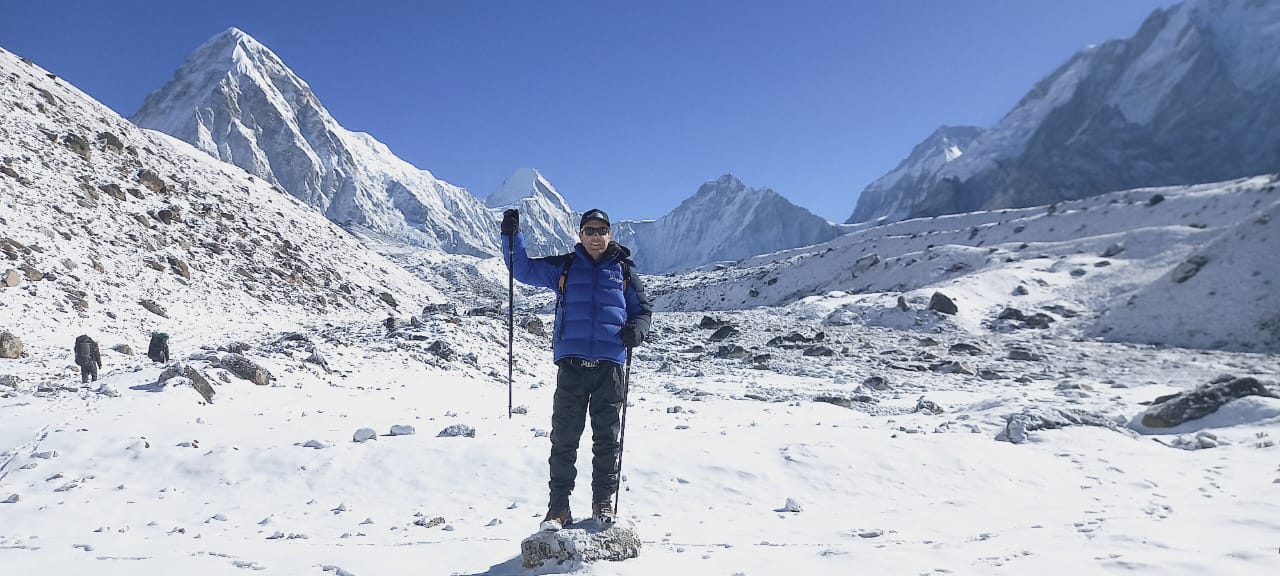
ISLAND AND LOBUCHE PEAK CLIMBING
Lobuche and Island Peak combo climbing expedition is a thrilling adventure that offers a unique opportunity to conquer two popular peaks in the Everest region of Nepal. Lobuche Peak (6,119m) and Islan...
Crevasse Rescue Techniques in Deep Snow Conditions
Crevasse rescue techniques are essential skills for navigating glacier terrain and mitigating risks during winter climbs on Lobuche Peak. Deep snow conditions increase the likelihood of crevasse falls, requiring climbers to be proficient in self-rescue and team rescue methods. Self-arrest techniques using an ice axe enable climbers to stop a fall and secure themselves on steep slopes or icy surfaces.
Team rescue techniques involve using ropes, harnesses, and pulley systems to extract a fallen climber from a crevasse safely. Anchoring systems and snow anchors provide secure points for setting up rescue operations and establishing communication between team members. Practice drills and scenario-based training prepare climbers to respond effectively to emergencies, ensuring rapid and coordinated rescue efforts in remote mountain environments.
Maintaining situational awareness and adhering to safety protocols, such as rope team travel and route markers, minimize the risk of crevasse accidents during winter climbs. Climbers should regularly review and update their crevasse rescue skills to remain prepared for unexpected challenges and emergencies on Lobuche Peak and other glaciated terrain in the Himalayas.
Winter Camping on Lobuche Peak: Tips and Strategies
Winter camping on Lobuche Peak requires strategic planning and preparation to ensure safety and comfort in extreme Himalayan conditions. Choosing a sheltered campsite with natural windbreaks minimizes exposure to harsh winds and maintains a warmer environment. Pitching tents on level ground and using snow skirts or walls around the perimeter provide additional insulation against cold and drifting snow.
Insulated four-season tents with snow-rated designs offer protection from sub-zero temperatures and high winds. Sleeping systems include down or synthetic sleeping bags rated for extreme cold, complemented by insulated sleeping pads for warmth and comfort on frozen ground. Regular maintenance of gear and equipment, including tent stakes and zippers, prevents malfunctions and enhances durability in winter conditions.
Managing condensation inside tents reduces moisture buildup and frost formation, improving overall comfort and safety. Utilizing vestibules for gear storage and cooking minimizes clutter inside sleeping areas and preserves living space. Proper waste management practices, such as packing out all non-biodegradable waste, protect fragile mountain ecosystems and maintain pristine wilderness areas.
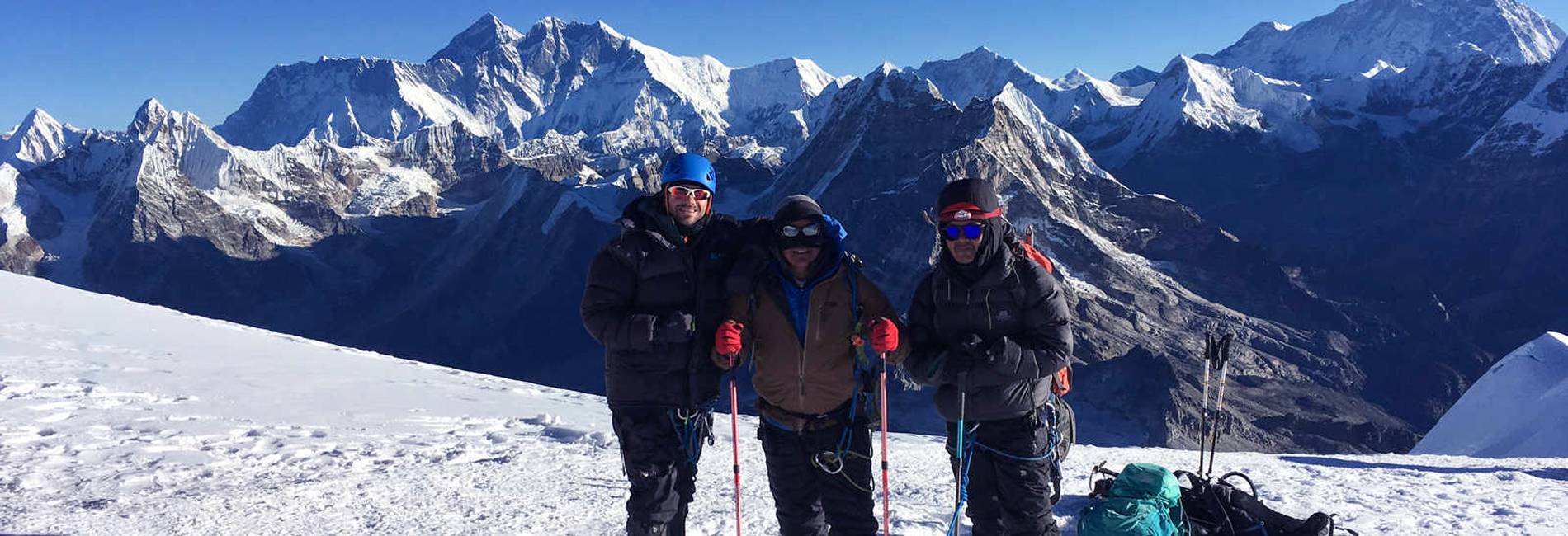
MERA PEAK CLIMBING
Mera Peak Climbing is an exhilarating adventure in Nepal that gives you an opportunity to reach the summit of Mera Peak at more than 6400m above sea level. Actually, it is the highest climbing (w...
Staying Warm and Dry in Extreme Cold Conditions
Staying warm and dry in extreme cold conditions on Lobuche Peak requires layering clothing and using high-quality insulation to retain body heat and manage moisture. Moisture-wicking base layers draw sweat away from the skin, preventing dampness that can lead to hypothermia. Insulating mid-layers, such as fleece or down jackets, provide warmth while lightweight and breathable outer shells protect against wind and precipitation.
Protecting extremities with insulated gloves, thermal socks, and a balaclava or neck gaiter minimizes heat loss and reduces the risk of frostbite. Insulated mountaineering boots with crampons offer traction on icy terrain and maintain foot warmth in sub-zero temperatures. Using chemical hand warmers and toe warmers provides additional heat during prolonged exposure to cold.
Regular movement and activity stimulate blood circulation and generate body heat, enhancing warmth and comfort during winter climbs. Avoiding overheating and excessive sweating by adjusting layers and ventilation prevents moisture accumulation inside clothing. Staying hydrated and consuming hot meals and beverages maintain internal body temperature and sustain energy levels throughout cold weather climbs on Lobuche Peak.
Dealing with Frostbite and Hypothermia on the Mountain
Dealing with frostbite and hypothermia is essential for climbers navigating extreme cold conditions on Lobuche Peak. Frostbite occurs when skin and underlying tissues freeze due to prolonged exposure to cold temperatures, particularly on exposed skin surfaces like fingers, toes, ears, and nose. Early symptoms include numbness, tingling, and pale or waxy skin appearance.
Treating frostbite involves gradually rewarming affected areas using body heat or warm water, avoiding friction or rubbing to prevent tissue damage. Hypothermia, a potentially life-threatening condition caused by prolonged exposure to cold, results in lowered body temperature and impaired physical and mental function.
Preventing hypothermia involves wearing layered clothing, staying dry, and maintaining adequate insulation and shelter from wind and precipitation. Recognizing symptoms, such as intense shivering, confusion, and slurred speech, prompts immediate action to rewarm the body and seek shelter and medical attention.
Emergency response planning includes carrying a comprehensive first aid kit with supplies for treating frostbite, hypothermia, and other cold-related injuries. Communicating symptoms and conditions to fellow climbers and guides facilitates prompt intervention and ensures coordinated rescue efforts in remote mountain environments.

ISLAND PEAK CLIMBING
Sherpa Expedition & Trekking (Est.1977) are pleased to announce FOR ADVENTURERS the most awesome, exhilarating & unforgettable climbing and treks on offer anywhere today!...
Emergency Response Planning for Winter Climbing Accidents
Emergency response planning is crucial for winter climbing accidents on Lobuche Peak, where remote and challenging terrain requires preparedness and effective communication strategies. Developing a detailed emergency action plan (EAP) includes assessing potential risks, identifying emergency contact information, and establishing communication protocols among team members.
Carrying communication devices such as satellite phones, two-way radios, or personal locator beacons (PLBs) enhances connectivity in remote winter environments. Testing equipment functionality and familiarizing with emergency response procedures before climbing expeditions ensure readiness to handle unexpected situations.
Responding to accidents involves assessing injuries, stabilizing casualties, and administering first aid based on training and experience. Implementing evacuation protocols, including helicopter rescue coordination and ground evacuation routes, expedites medical care and transports injured climbers to advanced medical facilities.
Collaborating with experienced guides and local authorities facilitates access to rescue resources and timely assistance during emergencies. Training in wilderness first aid and avalanche rescue techniques prepares climbers to manage critical incidents and promote safety during winter climbs on Lobuche Peak.
Communication Strategies in Remote Winter Environments
Communication strategies in remote winter environments on Lobuche Peak optimize safety, coordination, and emergency response among climbers and support teams. Establishing clear communication protocols before departure includes assigning designated channels for radio or satellite communication, establishing check-in times, and outlining emergency distress signals.
Carrying reliable communication devices, such as satellite phones or two-way radios, ensures continuous connectivity for real-time updates and emergency alerts. Testing equipment functionality and battery life before climbs mitigate risks of communication failure in challenging weather conditions.
Maintaining regular communication with base camps, guides, and fellow climbers informs route progress, weather conditions, and safety updates. Establishing emergency response plans includes predefined protocols for reporting incidents, assessing injuries, and coordinating rescue efforts.
Alternative communication methods, such as signal mirrors, whistles, or handheld flares, supplement electronic devices in emergencies where radio or satellite connectivity may be compromised. Familiarity with local language and communication customs facilitates interactions with Sherpa communities and enhances cultural exchange during winter climbs on Lobuche Peak.

CHULU FAR EAST PEAK CLIMBING
Are you looking for adventure, natural beauty, magnificent snow-capped peaks, and unique cultural experience?This Peak Climbing will give you all the thrills, variety, and the adrenalin rush as you cl...
Packing Essentials for Winter Climbing on Lobuche Peak
Packing essentials for winter climbing on Lobuche Peak ensures climbers are adequately prepared for the challenges of extreme cold and high-altitude conditions. Layered clothing includes moisture-wicking base layers, insulating mid-layers like fleece or down jackets, and waterproof outer shells to manage temperature and moisture. Insulated gloves, thermal socks, and a balaclava or neck gaiter protect against frostbite and maintain warmth in sub-zero temperatures.
Technical gear includes four-season mountaineering boots with crampons for traction on icy terrain, a climbing harness, helmet, and ice axe for safe navigation of glaciers and steep slopes. Personal safety equipment such as avalanche transceivers, probes, and shovels enhance preparedness for snow stability and emergency response in avalanche-prone areas.
Sleeping systems feature down or synthetic sleeping bags rated for extreme cold, complemented by insulated sleeping pads for comfort and insulation on frozen ground. Nutrition and hydration essentials include high-energy snacks, electrolyte-rich fluids, and portable stoves for melting snow and cooking hot meals at base camps and high-altitude stops.
Winter Navigation Techniques: GPS, Maps, and Compass Use
Winter navigation techniques using GPS, maps, and compasses are essential skills for navigating the complex terrain of Lobuche Peak in January. GPS devices provide accurate positioning and route tracking, aiding climbers in identifying key landmarks and adjusting navigation based on current locations and elevation changes. Reliable GPS units with backup batteries or solar chargers ensure continuous functionality in cold weather conditions.
Detailed topographic maps of the Everest region highlight trails, elevation profiles, and geographic features essential for route planning and decision-making. Compass navigation complements GPS technology, providing directional orientation and verifying course adjustments in remote and featureless landscapes.
Navigational proficiency includes interpreting terrain features, weather patterns, and snow conditions to assess route safety and efficiency. Familiarity with local landmarks, Sherpa trail markers, and cultural sites enhances situational awareness and enriches the climbing experience on Lobuche Peak.
Winter navigation strategies prioritize safety and efficiency by establishing predetermined waypoints, checkpoints, and emergency rendezvous points along climbing routes. Ongoing communication with team members and guides facilitates collaborative decision-making and enhances navigation accuracy in challenging winter environments.
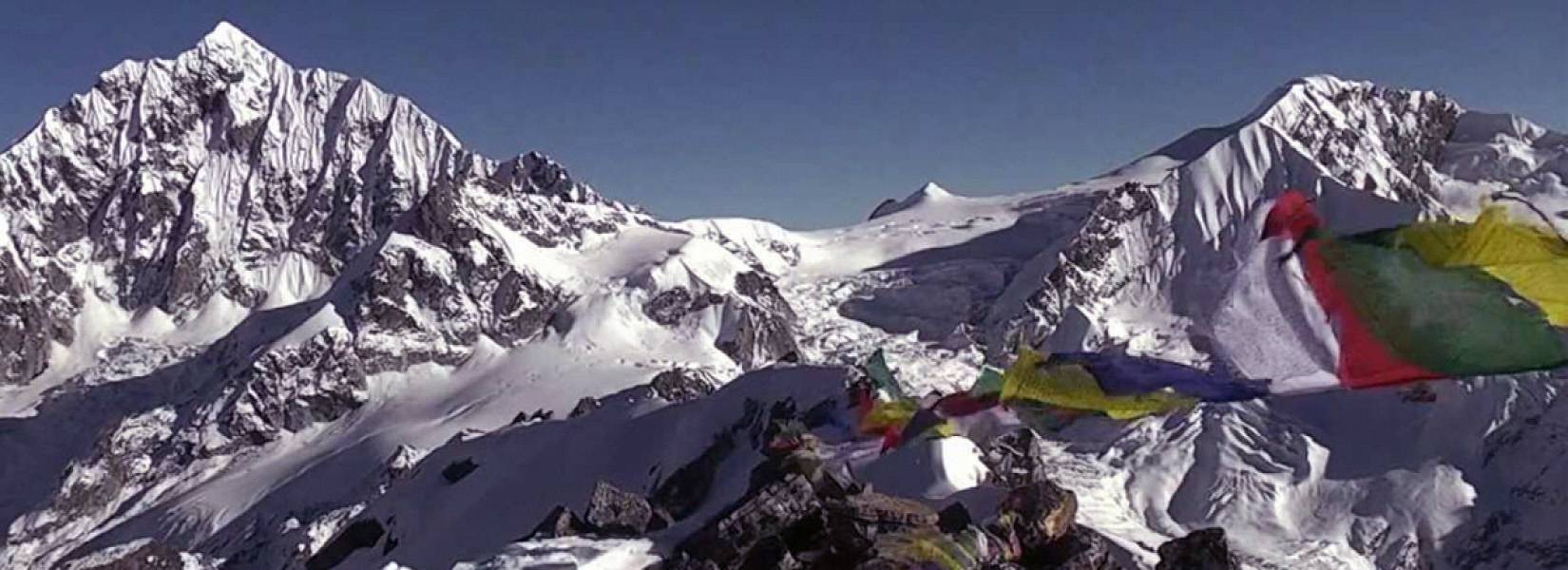
LARKE PEAK CLIMBING
Can there be any greater feeling than standing at the top of a mountain?This climb will test your endurance and determination and give you a true sense of achievement. The rewards are numerous. Firstl...
Environmental Impact of Winter Climbing on Lobuche Peak Ecosystems
Winter climbing on Lobuche Peak impacts local ecosystems and requires responsible practices to minimize environmental degradation and preserve natural habitats in the Everest region. Climbers adhere to Leave No Trace principles by carrying out all non-biodegradable waste and minimizing disturbance to flora and fauna. Proper waste disposal and recycling initiatives at base camps and tea houses support sustainable tourism and community development.
Reducing carbon footprints through energy-efficient practices and minimizing use of fossil fuels promote environmental conservation and mitigate climate change impacts on Himalayan ecosystems. Participation in conservation programs and supporting local initiatives, such as reforestation and wildlife protection, contribute to long-term sustainability efforts in the Everest region.
Monitoring and reporting environmental impacts, including glacier recession and changes in biodiversity, inform conservation strategies and promote scientific research on climate change. Collaboration with local communities and indigenous Sherpa guides fosters cultural preservation and environmental stewardship, ensuring future generations can enjoy the pristine beauty and biodiversity of Lobuche Peak and its surrounding landscapes.
Conclusion: Tips for a Successful Lobuche Peak Climb in January
Climbing Lobuche Peak in January offers a challenging and rewarding experience amidst the serene winter landscapes of the Everest region. Success on Lobuche Peak requires meticulous planning, physical preparation, and adaptation to winter climbing techniques. Prioritizing safety with comprehensive gear and equipment, adhering to environmental conservation practices, and maintaining open communication with guides and team members optimize chances for a successful summit bid.
Acclimatization stops, strategic itinerary planning, and flexible decision-making based on weather forecasts enhance safety and mitigate risks associated with high-altitude climbing. Embracing cultural interactions with Sherpa communities and appreciating the natural beauty of the Himalayas enriches the climbing experience and fosters a deeper connection with Nepal's mountainous heritage.
Climbers should prepare for variable weather conditions, including sub-zero temperatures and occasional snowfall, by packing appropriate clothing and gear for warmth and protection. Remaining adaptable to changing conditions and respecting local customs and traditions demonstrate respect for the environment and contribute to sustainable tourism practices in the Everest region.
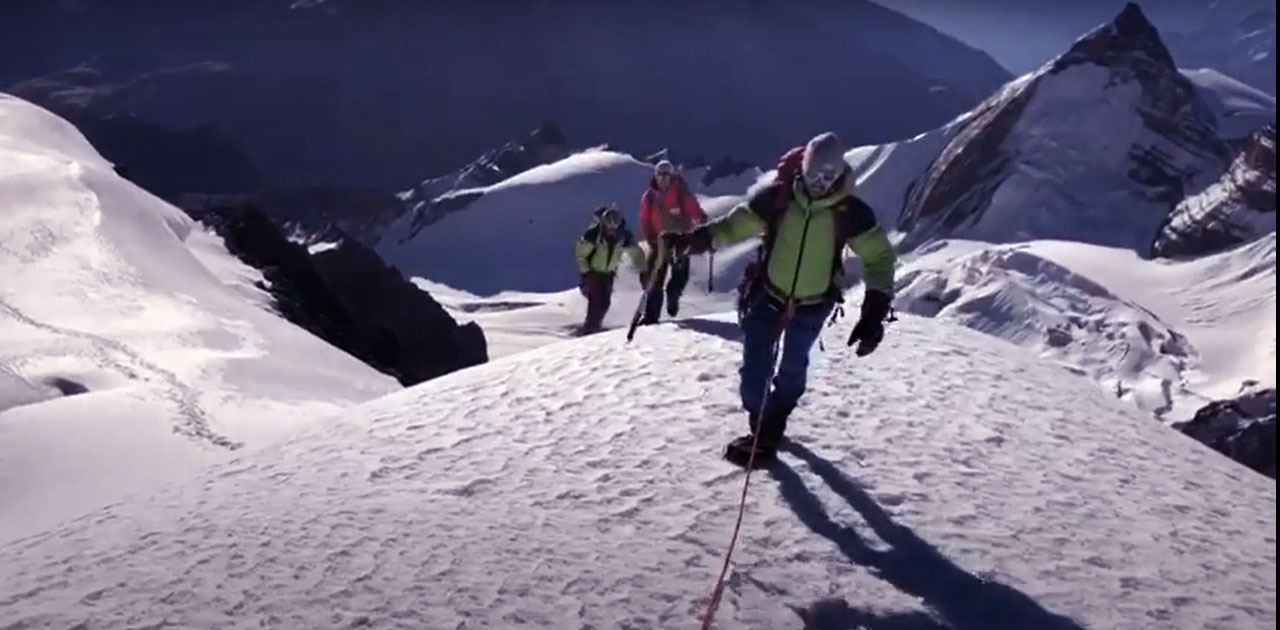
THORONG PEAK CLIMBING
Thorong Peak Climbing requires that you are reasonably fit and have a burning desire to see some of the most spectacular mountain scenery in the Annapurna region of Nepal. Besides climbing to 6144m, y...
By prioritizing safety, environmental responsibility, and cultural awareness, climbers can embark on a memorable journey to Lobuche Peak, celebrating personal achievements and forging lasting memories amidst Nepal's majestic winter wilderness.
Lobuche Peak Climbing Packages
Lobuche Peak Summit Return By Helicopter
Lobuche Peak Expedition 14 Days
Lobuche Peak Expedition 15 Days
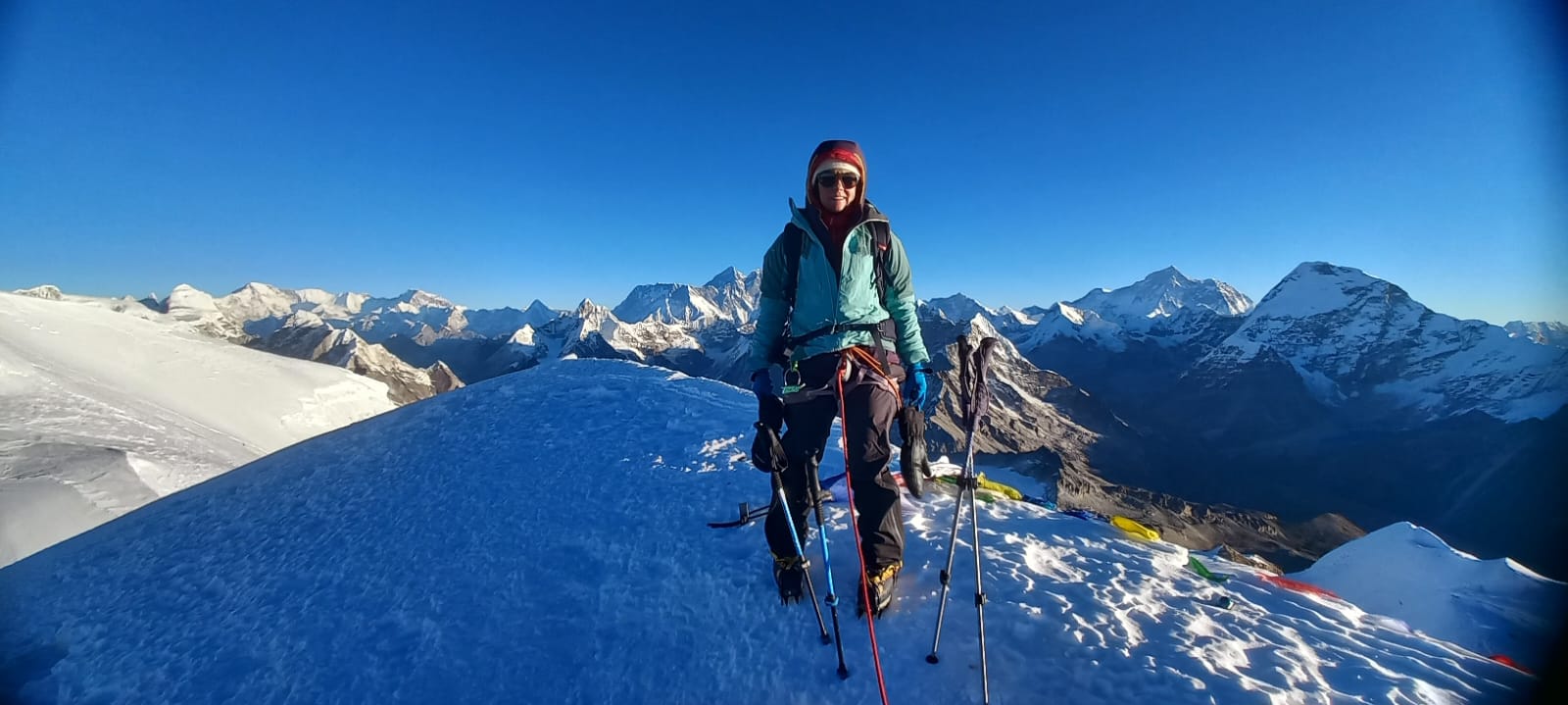
Three Peak Expedition
Embark on an unforgettable journey to the heart of the Himalayas as you conquer three majestic peaks: Mera Peak, Island Peak, and Lobuche Peak. This ultimate adventure combines technical climbing, bre...
Any Questions? Let Us Know.
Recent Posts
17th June, 2025


















